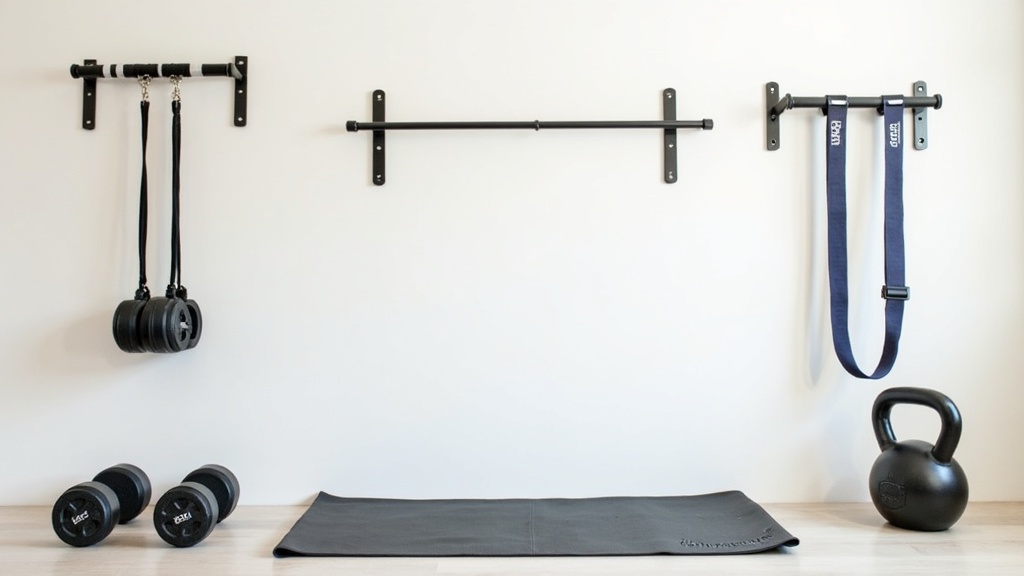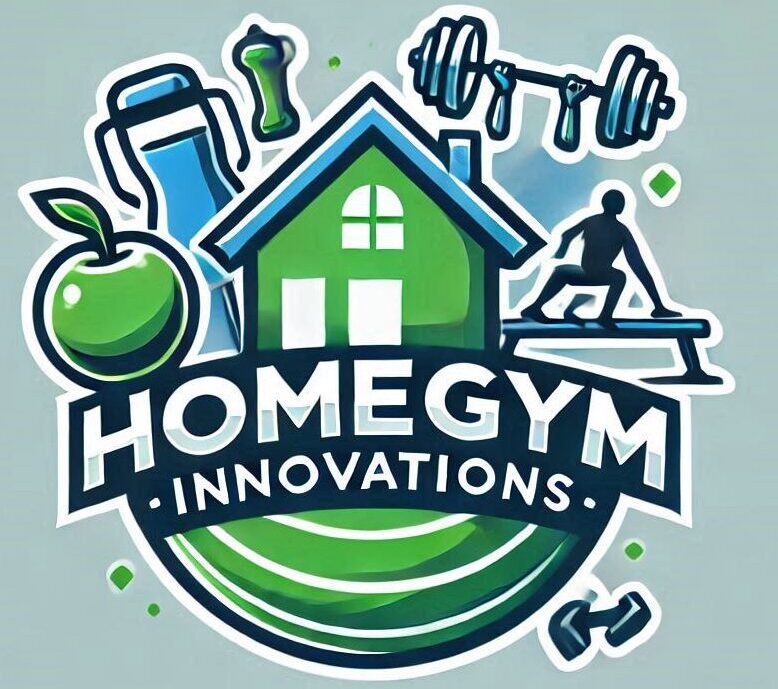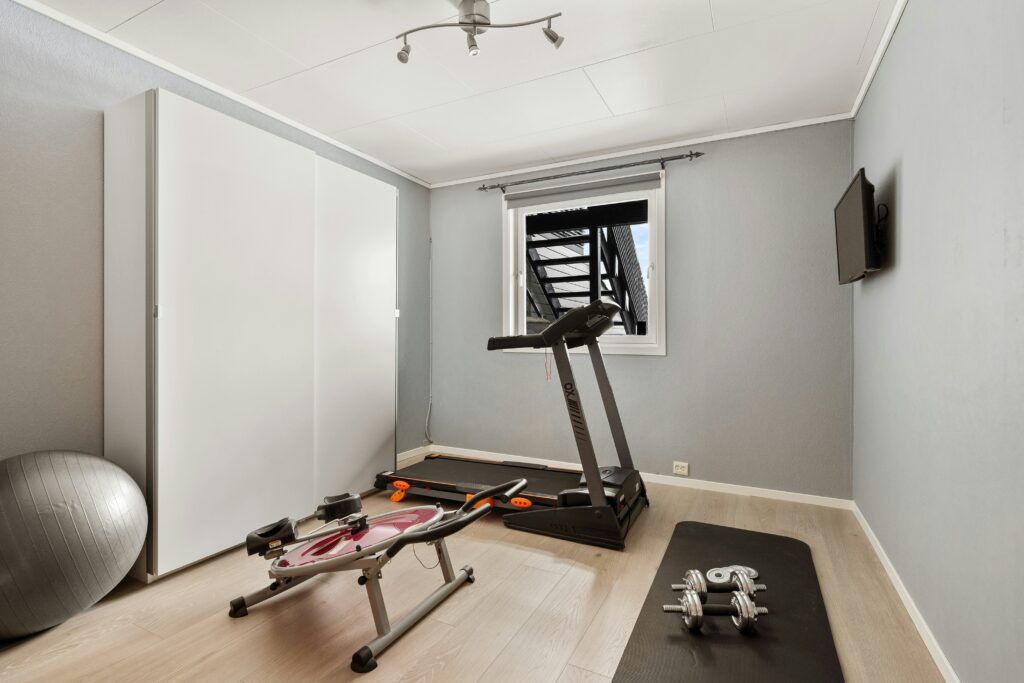If you’re looking to get strong at home but can’t stand cramped spaces or rows of unused gear, you’re definitely not alone. The world of home fitness is full of bulky machines and clutter that only get used for a few weeks before turning into glorified coat racks. I’ve found that a minimalist home gym can be not just cleaner, but way more motivating too. Let’s jump into how to build real strength at home, keep things simple, and avoid wasting space or money.

Why Go Minimal with Your Home Gym?
The idea of the minimalist home gym is all about getting straight to what works and nothing more. You don’t need a massive basement full of fitness machines to build strength, and you certainly don’t need to spend a fortune. A small collection of versatile tools lets you hit every major muscle group while keeping your workout area clean and open. Minimalist setups are perfect for people in apartments, small houses, or anyone who just doesn’t want to trip over a treadmill every time they walk through the room.
People are moving toward this simple mindset now more than ever, especially with busy schedules and limited living space. It’s much easier to stay motivated when you’re not overwhelmed by options or distracted by clutter. With a focus on quality over quantity, you can still meet your fitness goals without feeling boxed in by excess equipment. Plus, a cleaner home gym helps you feel calmer and more prepared each time you walk in to train.
Core Equipment for a Minimalist Strength Gym
When I set up my own space, I stuck to equipment that’s compact, multifunctional, and simple to store. You don’t need piles of gear to get a real fullbody workout. Here’s what shows up again and again in minimalist gyms:
- Adjustable Dumbbells: Flexible and take up way less room than a whole rack. You can go light or heavy, all with one pair. Brands like Bowflex and PowerBlock are popular, but there are budget options too.
- Resistance Bands: These are small, affordable, and provide loads of choices. You can use them for strength, stretching, or even as an assist for pullups if you pick a big loop band.
- Pullup Bar: A doorway pullup bar is easy to set up and remove if you need the doorway cleared. There are also freestanding versions that don’t require wall installations.
- Kettlebell: This one’s optional, but I find that even one or two kettlebells add a lot of variety. Swings, goblet squats, and Turkish getups work your whole body and burn plenty of calories.
- Exercise Mat: A thick mat protects your joints and can roll up to store in a closet. This doubles as a spot for stretching, floor core work, or yoga sessions.
Some folks throw in extras like a stability ball, jump rope, or a TRX trainer. These are nice bonuses if you have room, but you don’t need them for real strength training. Remember, with minimalist gyms, focus on the tools that give you maximum return with minimum clutter.
First Steps: Setting Up a Minimalist Space
A minimalist gym isn’t just about what you use. It’s also about how you use your space. Choosing a spot that’s inviting and gives you room to move makes more of a difference than filling every corner with gear. Try to find an area where you have enough space to stretch out. Good lighting, a mirror, or even just keeping things tidy can boost your motivation each time you work out.
Keeping your gear out of the way but easy to grab helps. A simple storage bench, shelf, or a few hooks for bands keeps everything organized and off the floor. This way, your space stays open and doesn’t turn into another cluttered spot in your home. Ideally, you want to look forward to your workouts instead of stepping into a mess.
How to Train for Strength Without Fancy Machines
Minimalist training is all about compound movements; these are exercises that use more than one muscle group at a time. That means you get more done in less time and your whole body gets stronger. Most routines rely on these basics:
- Squats: Do them with dumbbells, kettlebells, or just your bodyweight. Try split squats or single-leg variations for extra challenge and balance work.
- Pushups: Classic for a reason. Easy to progress by raising your feet or using bands for more resistance. Don’t forget diamond or wide pushups for different muscle focus.
- Pullups/Rows: Essential for pulling muscles, also builds your grip and core. Add some inverted rows if your pullup bar allows.
- Deadlifts: Adjustable dumbbells or a single heavy kettlebell work great. Focus on slow, correct form and feel the muscles work.
- Core Moves: Planks, leg raises on the pullup bar, or rollouts with a resistance band on your mat.
Keep your routine simple: three to five exercises, two or three sets each, focused on form. If you want to keep improving, bump up resistance, try tougher variations, or work up to more reps over time. If you’re not sure where to start, there are lots of beginner and intermediate routines available online that fit this simple setup.
Common Challenges and Practical Solutions
Owning a minimalist gym has a few quirks, mostly because you’re skipping the huge machines and racks of weights. Here are the common issues and how I’ve fixed them:
- Limited Weights: Adjustable dumbbells go a long way, but if you hit a plateau, add resistance bands or slow down your reps. Eccentric (slow lowering) training builds strength even with lighter weights.
- Space for Cardio: Jump ropes are perfect for small spots, or use bodyweight exercises like jumping jacks, mountain climbers, or burpees. These boost your heart rate and don’t need any extra gear.
- No Spotter: If you train solo and can’t safely lift heavy, focus on great form, use higher reps, and pick bodyweight or band-based progressions instead of risking injury.
- Staying Motivated: A clean, organized space helps a lot. I use a whiteboard to track goals and celebrate small wins, but fitness apps or wall calendars work just as well. Find what keeps you coming back.
Keeping It Clean and Clutter-Free
Nobody likes a messy workout space. Clean up regularly, only keep gear you actually use, and don’t buy into the idea that more equipment equals better results. What really delivers results is being consistent and intentional with your training; your environment should keep you focused, not distracted.
No Need to Break the Bank
This style of gym is easy on your budget compared to buying big machines or paying monthly gym fees. You can pull together your entire minimalist gym for around $300—less if you check out local ads for gently used gear. Even adding just one high-quality piece at a time helps your home gym grow stronger over a few months without breaking the bank.
Tips to Get More From Less in Your Minimalist Gym
I’ve learned a few techniques that can seriously boost the power of even the tiniest gym:
Mix Up Your Routine: Mix up your sets and exercises, experiment with different rep ranges, or try supersets to keep things challenging. Your body responds best to changes and new pressures.
Track Progress: Logging your workouts, whether on paper or digitally, helps you see how much you’re improving. It’s motivating to spot those gains, no matter how small.
Embrace Bodyweight Moves: Exercises like pistol squats, advanced pushup variations, or handstand holds get you strong and mobile, even with no gear at all.
Learn Good Form: With fewer moves in your program, you have the chance to master each one. Check out YouTube or apps for quick form tutorials so you get the most out of every rep.
Where to Find Ideas and Inspiration for Your Minimalist Workouts
There are tons of free resources out there that focus on minimalist, bodyweight, or small-space training. My go-to spots include:
- Nerd Fitness – Bodyweight routines that fit into any home
- Bodyweight Fitness subreddit – A welcoming community sharing routines and results
- Fitness Blender on YouTube – Loads of home workout videos for every fitness level
Social media like Instagram and YouTube are great for following people with minimalist setups—you’ll stumble upon clever storage ideas and new workouts to try. Community inspiration can make daily training a lot more enjoyable and less of a chore.
Frequently Asked Questions About Minimalist Home Gyms
Question: Can I really build muscle with just a few pieces of equipment?
Answer: Definitely. Focus on challenging movements, push for stronger variations or more reps, and stay consistent with dumbbells, a pullup bar, and resistance bands. Results come from how you train, not just what gear you use.
Question: What’s the best way to keep my minimalist home gym organized?
Answer: Use a shelf, storage bench, or basket to store your gear. Make it a habit to put everything away right after your workout so your space always welcomes you back.
Question: How much space do I actually need?
Answer: As little as a 6×6 foot area is enough for most home workouts. Just make sure you can move your arms freely and squat without hitting anything.
Minimalist Gym Equipment: Smart Picks for Everyday Use
Picking compact, multiuse gear is the foundation of a minimalist setup. My favorite daily picks are:
- Adjustable Dumbbells: These offer a wide weight range in a small footprint and swap between moves quickly.
- Pullup Bar: Takes up almost no space and unlocks key pulling movements.
- Heavy Resistance Bands: Handy for strength and stretching, plus easy to take on the road.
This setup lets you change exercises to match your fitness level—as you get stronger, you’re not stuck buying new gear all the time.
Minimalist gyms prove you don’t need a huge budget or a big room to get strong and feel great. Consistency, smart equipment picks, and an uncluttered space make a huge difference. Sometimes, doing more with less is the best way forward, and that’s why setting up a minimalist home gym is absolutely worth considering.
Final Thoughts
A minimalist home gym isn’t about flashy hardware—it’s about smart choices, pared-down essentials, and staying consistent without clutter. If you’ve already designed a space that lets you focus on training, you’re on the right track. Small spaces don’t limit your strength—they sharpen your intent.
What’s your favorite minimalist home-gym hack? Whether it’s folding benches, dual-use decor, or low-profile storage, drop it in the comments—I always love seeing clever setups come to life.
Know someone fighting for space but still wants results? Share this post with them, it might be the motivation (and strategy) they need.
What’s your favourite minimalist hack that lets you train smarter, not clutter? Drop it below—I’d love to learn what’s working in your space.”

